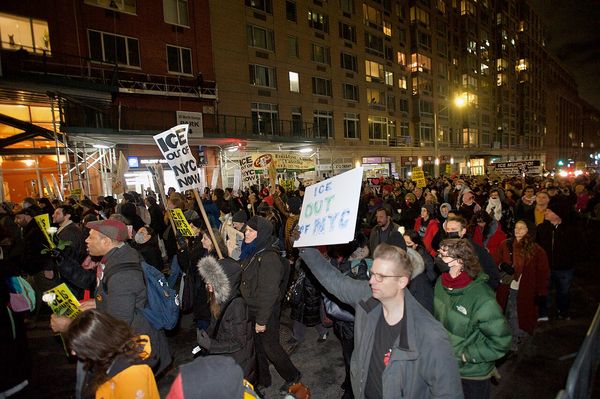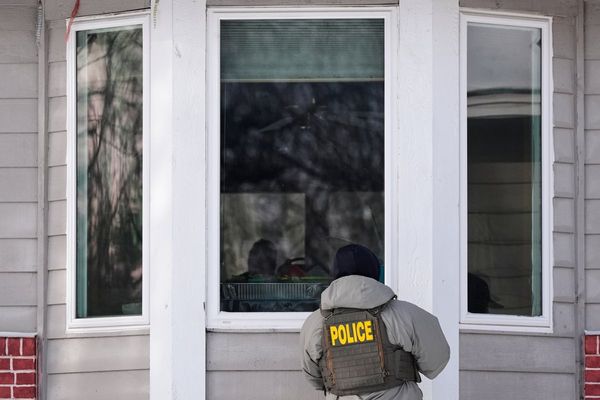
Last night, during my routine TikTok doom scroll, my algorithm once again proved it knew me best, populating my “for you page” with the perfect balance of Taylor Swift lore, time management tools for mid-20s women with undiagnosed ADHD, and powerful displays of gender-based violence activism.
I’m a PhD candidate at the ANU, researching dating app-facilitated abuse, so the latter was no surprise.
One of the latest viral trends on male violence against women poses the question, “Would you rather be stuck in the woods alone with a man or a bear?” Women’s emphatic, collective response has unsurprisingly been “bear”.
It reminded me of our family holiday to California’s Yosemite National Park last November. I had recently turned 25, and right on cue my burning desire to sign up for a half-marathon was ignited. As I set out on a picturesque but ultimately humbling trail run (hello mountains), I couldn’t help but deride the multiple, strategically placed signs to remain “bear aware” when it was the other runners I might encounter that I was most afraid of.
Perhaps it was this — and countless other lived “what ifs” — that prompted me to add to this conversation when I scrolled to the video of an incredibly brave creator who shared their story of a time they found themselves alone in the woods with what women online have harmoniously agreed is our most threatening predator.
In the video, creator Sienna recalls a time early in the pandemic when she matched with a man on Tinder. Ordinarily, her preference was to meet a Tinder match in public. Mindful of lockdown restrictions, she met this particular match in a car park. Soon, she found herself sipping coffee in a remote area, in a car with a man who was expecting her to engage in sexual activity.
As she saw it, she had five possible choices:
- Explain that she wasn’t interested, and hope that he respected her decision.
- Explain that she wasn’t interested, and be sexually assaulted.
- Explain that she wasn’t interested, and be violently assaulted to the point of serious injury and/or death.
- Explain that she wasn’t interested, and be left on the side of the road.
- Just do it, go home, and suffer the mental and emotional consequences of that choice.
While Sienna was one of the lucky ones, we know that many other women aren’t so fortunate. One need only look to the video’s comment section — and I urge you to — to read the testimony of hundreds of other women faced with this impossible choice who were subjected to a harmful outcome.
Both Sienna’s experience, and the “man vs bear” debate itself, are emblematic of the myriad paradoxical choices women in this country face every day. When to exercise, where to walk, who to fear. In my work on dating app-facilitated abuse, I witness the considered approach many women take — not necessarily to improve their safety, but to know they have done everything they can to protect themselves. In these contexts, mindful of who they could be meeting, women are choosing to conduct reverse image searches, checking available escape routes, and dressing in ways they feel will shield them from victimisation in some way (e.g. shoes easy to run in, clothes difficult to remove).
In 2022, Professor Anne Summers AO, who has devoted years of her career to exploring domestic violence and its consequences, published findings from her Ramsay fellowship exploring the links between family violence and social disadvantage. Her report revealed another of the stark choices facing Australian women experiencing violence — remain in an abusive relationship and risk the continuation or escalation of that violence, or leave and face the high probability of a life of “policy-induced poverty” for themselves and their children.
Crucially, these findings were based on Bureau of Statistics data from 2016, collected outside the context of the current housing affordability and general cost of living crises. Irrespective of this, shelters are at capacity, and women in imminent danger are being turned away, their hand forced. This choice is being made for them.
Last week’s national cabinet meeting on gender-based violence saw several welcome announcements. These included an increased investment into leaving violence payments over five years which will support those escaping abusive relationships with $5,000, and commitments to address violent pornography (including deepfake pornography), pilot online age assurance technologies, and undertake work towards bail reform for high risk and serial perpetrators.
But rather than applauding the government for taking these strides, commentary has instead revolved around what this announcement lacked — and justifiably so.
As Women’s Agenda editor Angela Priestley explained in her blog last week, there is nothing particularly innovative or game-changing in this announcement, and — quoting Gabrielle Morrissey, CEO of Sydney women’s refuge Women & Children First — nothing that will keep women safer “tomorrow, next week or next month”. As Jess Hill and Michael Salter have argued in their recent whitepaper on “Rethinking Primary Prevention”, we need greater investment in practical, short-medium term interventions in addition to existing cultural change strategies that aren’t expected to yield significant results for decades.
In one week’s time, the Albanese government is due to release the 2024-25 federal budget, which needs to reflect both the scale and urgency of this issue if we are ever going to meet the ambitious target to end violence against women and children in a single generation.
It’s time for our leaders to make a choice (albeit absurdly overdue). The choice to take men’s violence against women seriously. This begins with the choice to meaningfully invest in frontline services and ensure state and territory governments are accountable to distribute these resources in a timely and appropriate manner. The NSW government’s recent announcement of a $230 million emergency domestic violence package is a welcome example of this commitment that needs to be echoed by other jurisdictions with haste.
It’s also about the choice to bolster responsible media standards to ensure that reporting does not engender further harm. Above all, success hinges on the choice to listen to the experts, the advocates, the victim-survivors, and those left behind in the wake of violence who stress that this isn’t just about financial commitment, it’s about what comes next.
To the leaders of this country across all levels of government, what will your legacy be?
The choice is yours.
If you or someone you know is affected by sexual assault or violence, call 1800RESPECT on 1800 737 732 or visit 1800RESPECT.org.au. In an emergency, call 000.
For counselling, advice and support for men in NSW, Victoria and Tasmania who have anger, relationship or parenting issues, call the Men’s Referral Service on 1300 766 491. Men in WA can contact the Men’s Domestic Violence Helpline on 1800 000 599.







